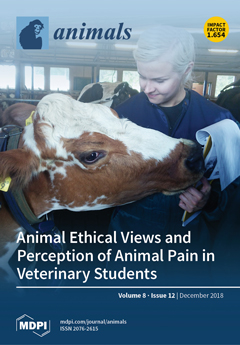Much of the research on pedigree dog breeding has been directed towards understanding the implications of reduced genetic diversity and the prevalence of inherited disorders. An example is the potential role of the popular sire effect in perpetuating genetic defects. If male dogs are more likely than bitches to be identified as examples of members of a breed that align with breed standard, they may be selected for breeding earlier. This may contribute to the influence of individual males and contribute to popular sire effect. Conversely, if breed standards are written in a sex-neutral fashion, and if dogs are entered, exhibited, and judged in a sex-neutral fashion, then we would expect the success of female dogs in the show ring to be equal to that of their male counterparts. With a focus on toy and giant breeds, the current pilot study collated samples of dog show results to explore relationships between sex and the likelihood of success in the show ring. It focused on toy and giant breeds to explore any differences in equity, if it existed, at either end of the size and concomitant age-at-maturation spectrum. For the purpose of this study, toy breeds were those that weigh < 10 kg at maturity while giant breed dogs were those that exceed 45 kg. Within these two clusters, the least (n = 3) and most popular (n = 3) breeds were then selected to explore any potential role of sex on success in the show ring. The popularity of breeds was determined using the numbers of dogs registered with the Australian National Kennel Council. Using results from dog shows (n = 18) from 2015 to 2016, data on 1,080 dogs were obtained. Within these 12 breeds for the 18 shows, there were 137 Best of Breed (BOB) titles awarded: Pug (n = 18), Toy Poodle (n = 18), Bullmastiff (n = 14), Rottweiler (n = 17), Fox Terrier (Smooth) (n = 18), Bloodhound (n = 3), Schnauzer (miniature) (n = 15), Great Dane (n = 17), Norfolk Terrier (n = 10), Norwich Terrier (n = 5), Central Asian Shepherd Dog (n = 2). Despite the near parity of male and female dogs being exhibited, of these 137 titles, 86 (62.8%) were awarded to male dogs (at least 41 individuals) and 51 (37.2%) to female dogs (at least 32 individuals) showing that male dogs are more likely to win BOB titles (χ
2 = 9.4455, df = 1,
p-value = 0.002117). Among the toy subset of breeds, this effect was higher (χ
2 = 6.798, df = 1,
p-value = 0.009126) than among the giant breed subset, for whom the advantage to male dogs did not reach statistical significance versus χ
2 = 3.0967, df = 1,
p-value = 0.07845). This suggests that judges find the male dogs more appealing, presumably because they are more aligned with breed standards.
Full article






